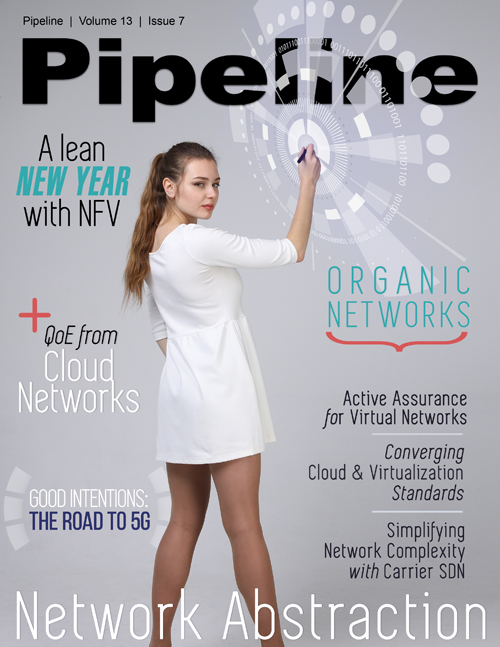The critical role of Active Assurance in the context of SDN and NFV
Service Assurance in a Virtual Network
Since services in a virtual network are implemented in software and dynamically routed through the virtual network to address changing network conditions, this implies only the service endpoints are fixed. How the service is mapped through the network is indeterminate, so predicting where to place physical probes, active or passive, is difficult. Fortunately, there is a simple solution to this problem. By implementing the probes as VNFs, service assurance becomes part of the service itself, rather than a function of the network. This is a fundamental shift in the way service providers think about service assurance. No longer is it an afterthought added to address high revenue services, rather it becomes an essential part of all services. And it’s not just for ongoing service assurance either; it also applies to service activation testing. In the fully- automated virtual network, services will be created and tested before being handed over to the customer, in minutes rather than days, and all without human intervention. And once up and running, these same services are monitored constantly to ensure they continue to meet the service requirements – and when they don’t, the network automatically adjusts itself to fix the issue.
Closed Looped Assurance with Active Probes
As mentioned, a primary factor in the success of virtualized networks is automation - the ability of the network itself to make decisions on 1) how and where to build new services and 2) how to continually optimize the virtual network to address changes in the network state. This ability will rely heavily on analytics to drive this process and the analytics will only be a good as the information being fed to it.
For certain, longer term planning activities like bulk capacity upgrades or data center expansions, information from passive probing systems may be sufficient as this information is well-suited to historical trend and predictive needs analysis. But for decisions involving the performance of services in the virtual network or optimization activities to address network congestion or facility failures, real-time metrics are required and these will only come from active probing. Deployed appropriately, the active probes can provide the analytics engine with a complete view of performance from three key dimensions – customer, service and network. This multi-dimensional 3D view allows for a greater understanding of the entire network state and, therefore, better optimization decisions. Only by continuously feeding real-time QoE metrics back into the decision making systems will service providers be able to exceed their customers service expectations.
How EXFO delivers this solution
Smarter service assurance is the foundation for smarter network success. EXFO provides a clear, three-phase path for transitioning with confidence to NFV/SDN deployment and operationalization. Our service assurance solutions for physical, hybrid and virtualized infrastructures deliver high performance and reliability at the network, service and subscriber levels. Our real-time 3D analytics, test orchestration, and active and passive monitoring offer unprecedented agility, efficiency, automation and end-to-end visibility. Together, we will make sure the virtual and the physical behave as expected—and deliver results as promised.
Phase One - Virtualizing
Make sure your migration to virtualization is done right, without negative impacts to subscribers or your bottom line. We fully assure the
performance of physical, hybrid and virtual infrastructures, and the services they deliver throughout their entire lifecycles.
Phase Two - Automating Operations
Make sure the automation of your services deployment increases ROI, efficiency, performance and deployment speed. We make it
possible to automate your operations without risking reliability.
Make sure you reach your goals of optimized operational efficiency, agile service creation and increased revenue. We make it possible by enabling closed-loop automation through real-time analytics and test orchestration.



















